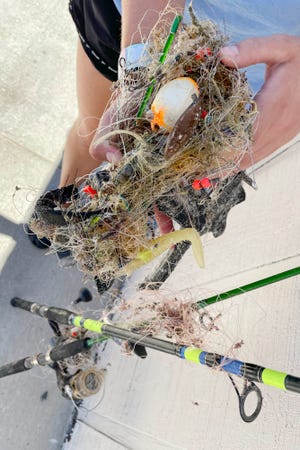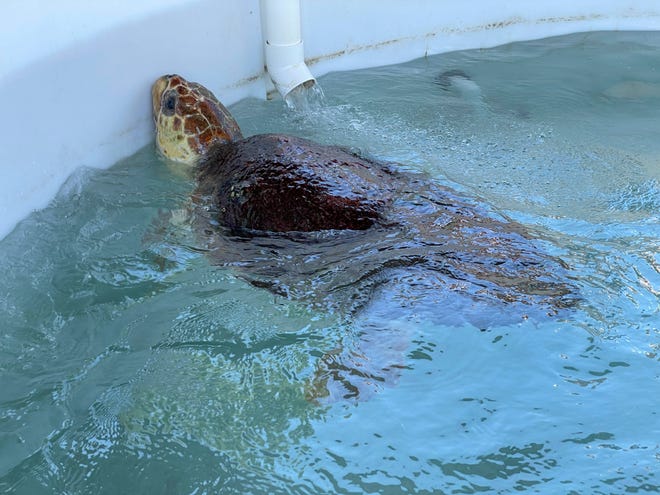Okaloosa County Sheriff’s Office Lt. Matt Harrison and Lt. Jeremy Gilbert were cruising along Santa Rosa Sound while off duty on the Fourth of July when they spotted an osprey struggling in the water.
The bird had a treble hook stuck to its right leg and face and was barely able to stay afloat. Had Harrison and Gilbert not been there, it is likely the bird would have died.
Their rescue was one of many in Okaloosa County over the past month.
Rehabilitated sea turtles released:Gulfarium C.A.R.E. Center releases 4 rehabilitated sea turtles back into the Gulf of Mexico
More about conservation:How to help conserve Florida wildlife as sea turtles, manatees become more active this spring
According to Melissa Smith, public information coordinator for the northwest region of the Florida Fish and Wildlife Conservation Commission, hundreds of coastal animals such as seabirds, sea turtles and marine mammals are snagged in monofilament fishing line and other fishing tackle in Florida each year.
“Wildlife entanglements with fishing line and other debris unfortunately still happen across the state,” Smith said. “Fishing line can be deadly to waterbirds, sea turtles and other wildlife, so disposing of it properly can save wildlife from pain and suffering.”

Monofilament is a strand of strong, flexible plastic used for fishing, and most of it is non-degradable in the water. According to the FWC, it can last up to 600 years. Boaters like Harrison have also noticed the prevalence of wildlife entanglements.
“I’ve been in the area for a long time and when I owned my own boat would go out. I have seen other birds entangled,” Harrison said. “When I used to fish on the pier I would see birds occasionally entangled in fishing line or have lures stuck to their beaks or stuck to their feet. It’s fairly common.”
Recent incidents with turtles
At least three animals have been freed from fishing line recently. Coast Guard Station Destin crew members rescued a shark that was trapped in a fishing net while on a routine voyage June 16.
On July 5, a 217-pound loggerhead sea turtle was found entangled with 5.5 pounds of fishing line, hooks, lures and two fishing rods at the Okaloosa Island Pier.
So far this year, there have been nine turtles rescued from the Okaloosa Island Pier, according to Tabitha Siegfried, sea turtle stranding coordinator for the C.A.R.E. Center at the Gulfarium Marine Adventure Park.
Last year, the nonprofit rescued more than 100 turtles. The loggerhead sea turtle, now named “Carole,” suffered a wound to her front right flipper but is expected to make a recovery in about two months.

However, not all animals are so lucky. Monofilament entanglements can result in drowning, starvation or loss of flippers or tails.
“Line can potentially cut into an animal’s skin or get wrapped around an appendage,” Smith said. “Entangled limbs often must be amputated. Line can also get wrapped around a bird’s beak or an animal’s mouth, preventing them from feeding normally.”
#30atv #30a

Be the first to comment on "Bird, shark rescues in Okaloosa show importance of properly disposing fishing line, tackle"